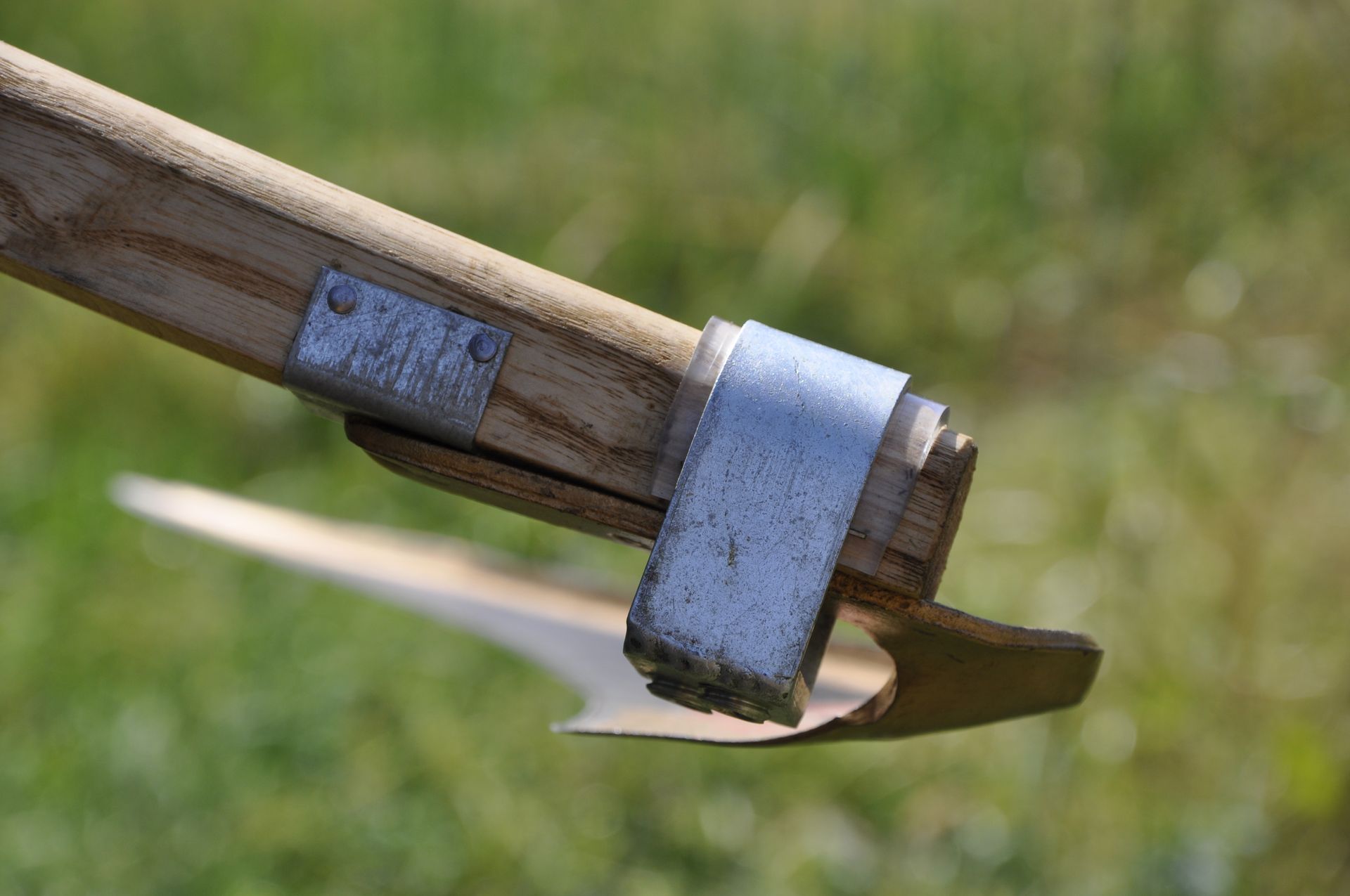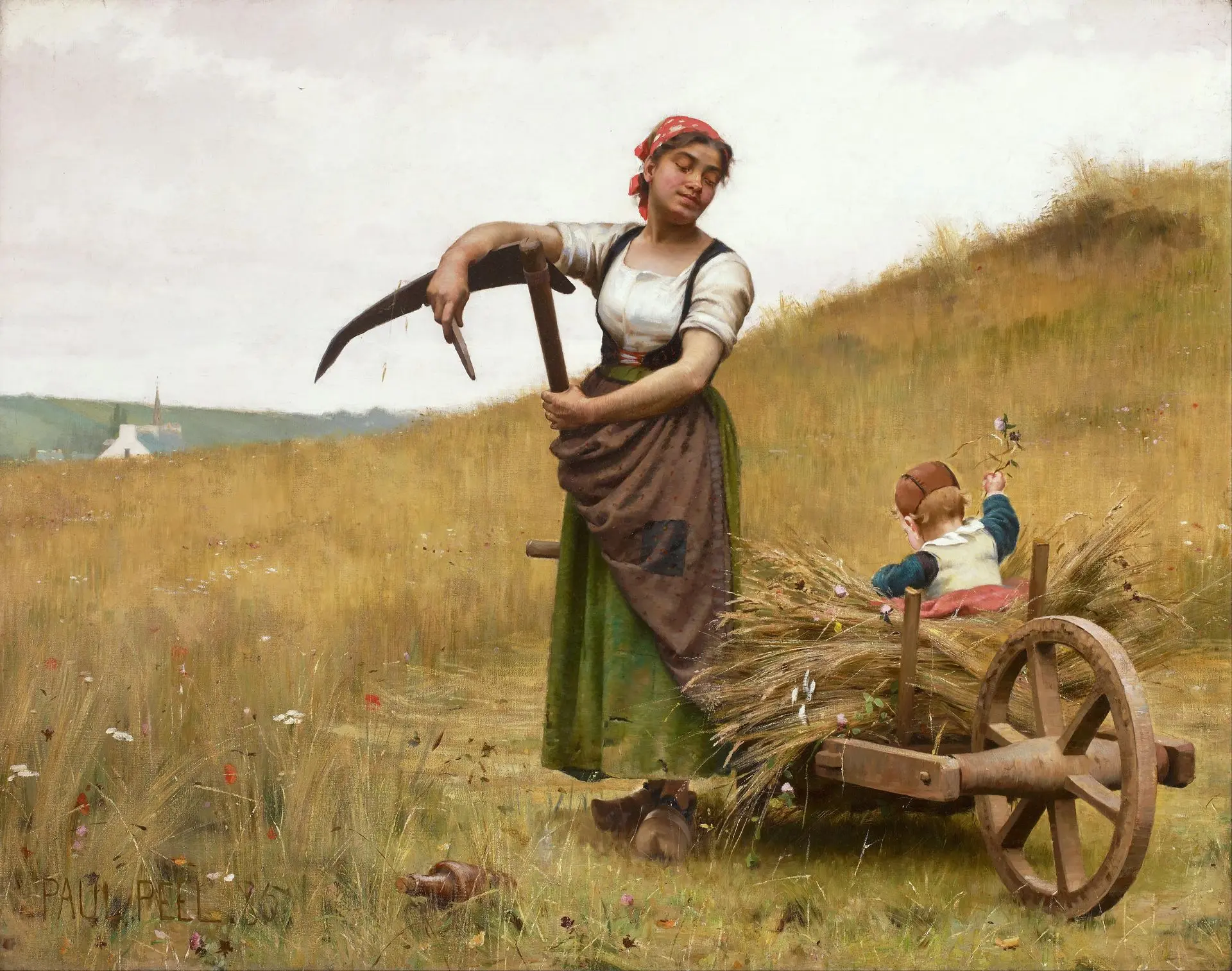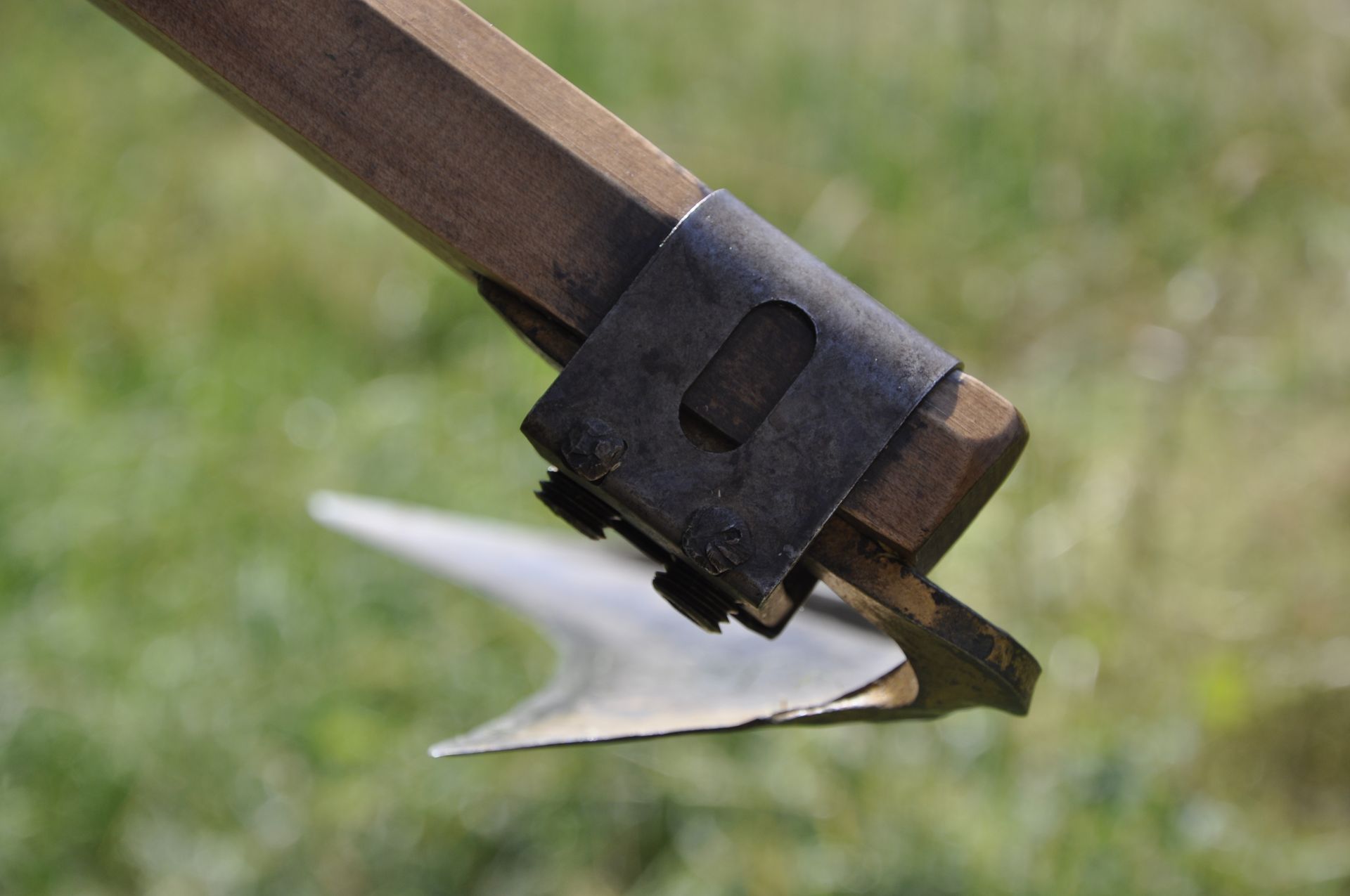Quality scythes
Falci ("faltchi"), in Italy, and Schroeckenfux (or Fux), in Austria, are two of the last remaining manufacturers of quality scythes in the world.
Italy and Austria have a long tradition in the manufacture of scythe blades.
The quality of the steel and the expertise of the blacksmiths are essential to the manufacture of blades that are both strong and light. It has become difficult the last decades to find a good selection of scything equipment, as well as proper advice, in hardware stores.
The straight snath
There exist many types of snaths with one or two grips, with different shapes and configurations depending on the region. In Eastern Europe and the Middle East, a straight snath with a single grip is very common, and therefore this type is likely the most widely used today. It has some considerable advantages and is relatively easy to make, even for someone with little woodworking experience. This is a snath that, when properly set up, can be very ergonomic and efficient and allows for a better energy transfer than some curved models. I prefer a straight snath for mowing dense and heavy grasses.
The straight snath model that I prefer and that I use most of the time is the traditional Ardennes snath. It looks quite similar to the Eastern European snath, but there are some differences. The Ardennes snath is conical in shape; it is thicker on the lower side, which increases the centrifugal effect in the movement. It generally has two straight-shaped grips, which are often turned. It comes quite naturally to hold the palm of the right hand partially against the snath itself, which offers better control of the horizontal balance of the blade, as well as better transmission of energy. Some people may however prefer the curved grips that are usually seen on Eastern European snaths. The Ardennes snath is beautiful, elegant and solid, which allows you to work comfortably, provided it's the right size, and that the blade is correctly mounted, which of course applies to any snath model.
The old "Belgian" blade models
The "Belgian" blade models were adapted to Belgian snaths. Many of these blades were actually made in Austria., Germany or France. Belgium did not have a significant scythe industry but a manufacturer existed in the town of Ciney. Most of the blades I have seen stamped with the name "Ciney" were in fact made in Austria. From what I have seen, these old blades are generally of good quality and it's often possible to restore them. All the examples I've seen have a fairly high tang angle (often around 37º or more). This angle is well suited to the straight snath. It's often necessary to slightly adapt the bottom of the snath, either by removing a little wood when the tangle is too low or, on the contrary, by adding a small wedge in case the angle is too high, to ensure that the blade rests correctly on the ground without having to adopt an uncomfortable position. The steel snaths commonly sold in hardware stores do not offer much adaptability and are heavier and less ergonomic. The old blades made for the Belgian market are generally heavier than most blades sold today, which is sometimes an advantage in dense and heavy vegetation. That being said, I prefer light blades in most situations.

The Austrian model
The Belgian model
I make traditional straight Ardennes snaths in my workshop when I have quality ash. Another option is to make your own snath. A simple straight snath with a single grip can be very suitable and is not difficult to make. A hazel rod about 5cm thick, a piece of wood for the grip, and a few simple tools are all you need. This video tutorial is a good place to start. Feel free to contact me for more information.

Adoration, Paul Peel, 1885
